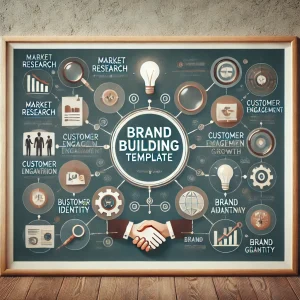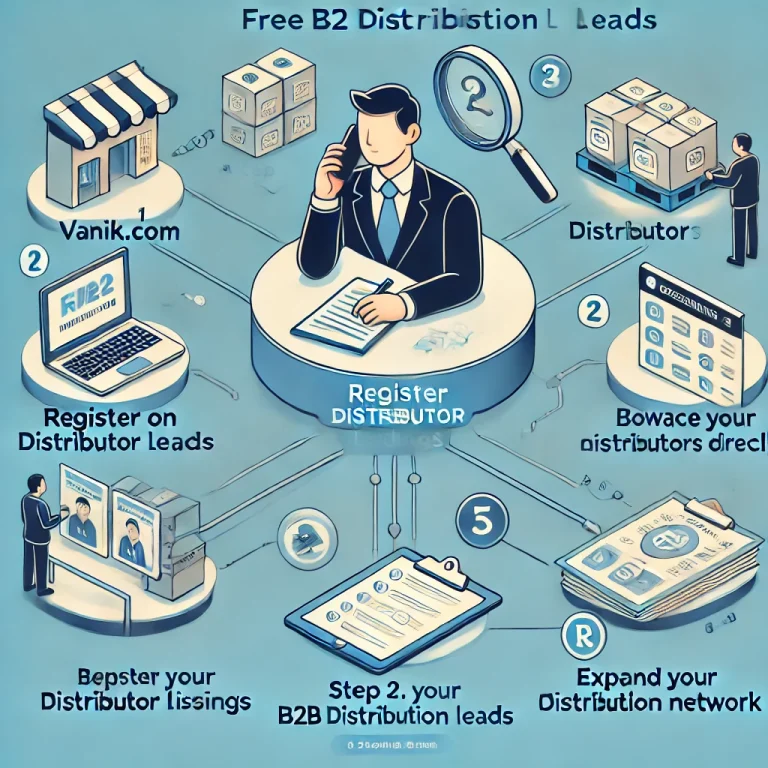In today’s competitive market, building a strong brand is crucial for the success of any product or service. A brand represents the identity and values of your business and helps differentiate you from competitors. A well-established brand can create customer loyalty, foster emotional connections, and build credibility. Let’s create a brand building template that explores the steps needed to create a successful brand, along with factual data, real-world examples, and case studies.
1. First Step In Brand Building Template – Define Brand Identity
- Key Components:
- Name: A strong, memorable name is the foundation of your brand. For example, Apple is not only simple but also evokes innovation and modernity.
- Logo: A logo is a visual representation of your brand, like Nike’s swoosh, which signifies motion and speed.
- Message: This is the core message that your brand conveys to its audience. Tesla’s message of sustainability and cutting-edge technology has made it a leader in the electric vehicle industry.
- Values: These are the guiding principles that drive your brand. For instance, Patagonia’s commitment to environmental sustainability resonates with eco-conscious consumers.
- Image: This is how your target market perceives your brand. A strong brand image helps to establish an emotional connection, as Coca-Cola does with its association with happiness and togetherness.
- Case Study: Red Bull
Red Bull didn’t just create an energy drink; they built an identity around extreme sports, adventure, and high energy. Their branding strategy revolves around selling a lifestyle rather than just a product, which has enabled them to dominate the global energy drink market.
Examples
1. Nike
– Name: Nike
– Logo: Swoosh symbol
– Message: Empowerment through sports and fitness
– Values: Innovation, performance, style
– Image: Dynamic, motivational, athletic
2. Coca-Cola
– Name: Coca-Cola
– Logo: Distinctive script
– Message: Refreshment, happiness, sharing
– Values: Quality, tradition, community
– Image: Iconic, nostalgic, enjoyable
3. Amazon
– Name: Amazon
– Logo: Smiling arrow
– Message: Convenience, selection, customer satisfaction
– Values: Innovation, speed, reliability
– Image: Trustworthy, vast, customer-centric
4. Mercedes-Benz
– Name: Mercedes-Benz
– Logo: Three-pointed star
– Message: Luxury, performance, reliability
– Values: Quality, innovation, prestige
– Image: Sophisticated, elegant, high-end
5. McDonald’s
– Name: McDonald’s
– Logo: Golden arches
– Message: Convenient, affordable, family-friendly dining
– Values: Quality, consistency, customer satisfaction
– Image: Friendly, approachable, quick
6. Google
– Name: Google
– Logo: Colorful letters
– Message: Innovation, search, knowledge
– Values: Innovation, speed, relevance
– Image: Intelligent, helpful, cutting-edge
7. Starbucks
– Name: Starbucks
– Logo: Siren
– Message: Quality coffee, customer experience
– Values: Sustainability, community, customer satisfaction
– Image: Welcoming, premium, coffee expert
8. Microsoft
– Name: Microsoft
– Logo: Four-colored window
– Message: Productivity, innovation, empowerment
– Values: Quality, reliability, customer satisfaction
– Image: Trustworthy, innovative, business-oriented
9. Toyota
– Name: Toyota
– Logo: Three-ellipse symbol
– Message: Quality, reliability, durability
– Values: Innovation, customer satisfaction, environmental responsibility
– Image: Reliable, practical, innovative
10. Facebook
– Name: Facebook
– Logo: “F” logo
– Message: Connecting people, sharing experiences
– Values: Innovation, community, connectivity
– Image: Social, interactive, dynamic

2. Conduct Market Research
Market research is essential to understanding your target audience. By analyzing demographics, behaviors, and needs, you can tailor your brand identity to resonate with potential customers. A study by Nielsen showed that 59% of consumers prefer to buy from brands they trust, making market research a crucial step in identifying consumer pain points and building trust.
- Example: Dove
Dove’s “Real Beauty” campaign was a direct result of market research that revealed women’s dissatisfaction with unrealistic beauty standards. By addressing this issue through authentic representation, Dove’s brand loyalty soared.
3. Build a Consistent Brand Experience
Consistency across all touchpoints is key to creating a successful brand. From your website to packaging to customer service, every aspect of your business should reflect your brand values and message.
- Case Study: Starbucks
Starbucks has consistently delivered the same in-store experience worldwide. The familiar green logo, the atmosphere of its cafes, and the personalization of beverages are all part of a cohesive brand experience. This strategy has helped Starbucks build a loyal customer base across the globe.
4. Leverage Storytelling
People don’t just buy products; they buy stories and experiences. Your brand’s story helps convey its purpose, mission, and values.
- Example: Airbnb
Airbnb’s “Belong Anywhere” campaign focuses on the idea of community and shared experiences. By telling the stories of real hosts and travelers, Airbnb created an emotional connection with users, reinforcing the idea that they are not just booking a stay but becoming part of a global community.
5. Focus on Building Brand Awareness
Brand awareness is essential for staying top of mind among consumers. Utilizing social media, influencer partnerships, and content marketing can help boost awareness.
- Factual Data: A HubSpot report found that 80% of consumers are more likely to consider a brand they’ve seen on social media.
- Example: Glossier
Glossier, a beauty brand, built its awareness primarily through Instagram, leveraging user-generated content and influencer partnerships. Within three years, it achieved a valuation of $1.2 billion, proving that brand awareness strategies can lead to significant growth.
- Example: Glossier
6. Engage Your Customers
Customer engagement is a powerful tool for building loyalty. This involves interacting with customers on social media, responding to reviews, and creating campaigns that encourage user interaction.
- Example: Nike
Nike’s use of digital platforms like the Nike+ Run Club app keeps users engaged with their fitness goals while reinforcing the brand’s commitment to health and performance. Nike also encourages users to share their stories, building a community around the brand.
7. Monitor and Adapt Your Brand
Branding is not a one-time effort. You must continuously monitor your brand’s performance and adapt to market changes, customer feedback, and evolving trends. Flexibility allows your brand to remain relevant in a dynamic market environment.
- Case Study: Netflix
Netflix started as a DVD rental service but successfully transitioned into a streaming service. By continually adapting its brand to new trends and consumer demands, Netflix has become a global leader in entertainment with over 230 million subscribers.
Conclusion
Building a brand is about more than just creating a logo or a catchy name. It requires a deep understanding of your audience, a clear and consistent message, and an emotional connection with your customers. Companies like Apple, Red Bull, and Starbucks have successfully created powerful brands that dominate their industries by focusing on these essential steps. By conducting thorough market research, telling a compelling story, and consistently delivering on your brand promise, you can build a brand that resonates with your target audience and stands the test of time.



